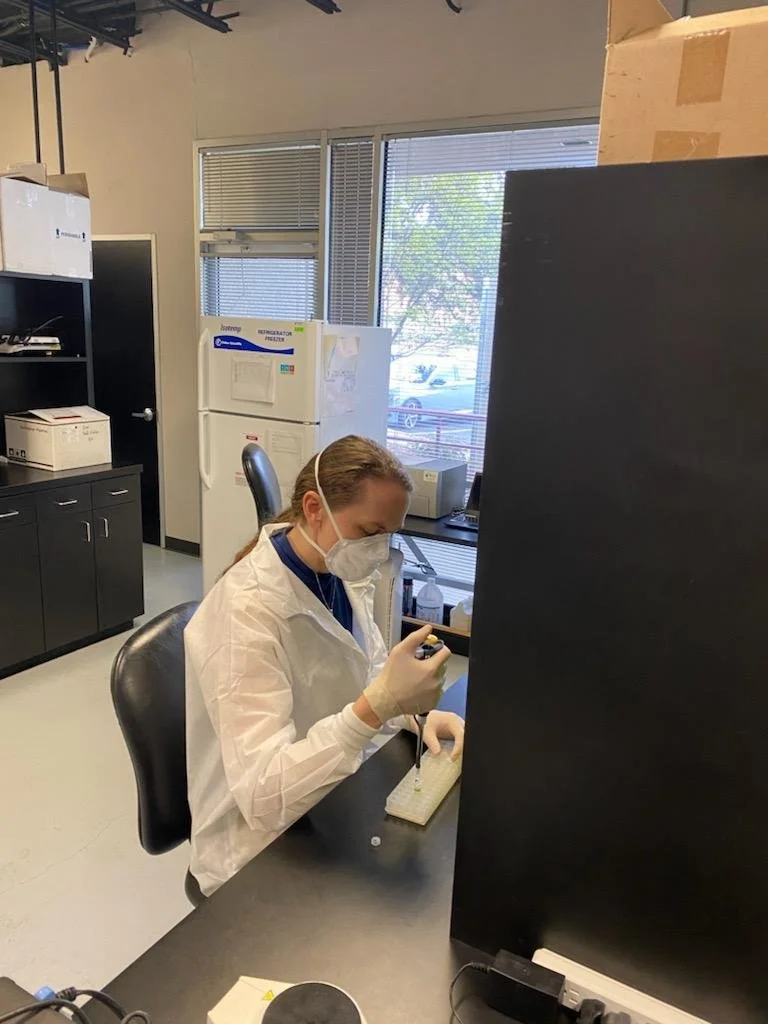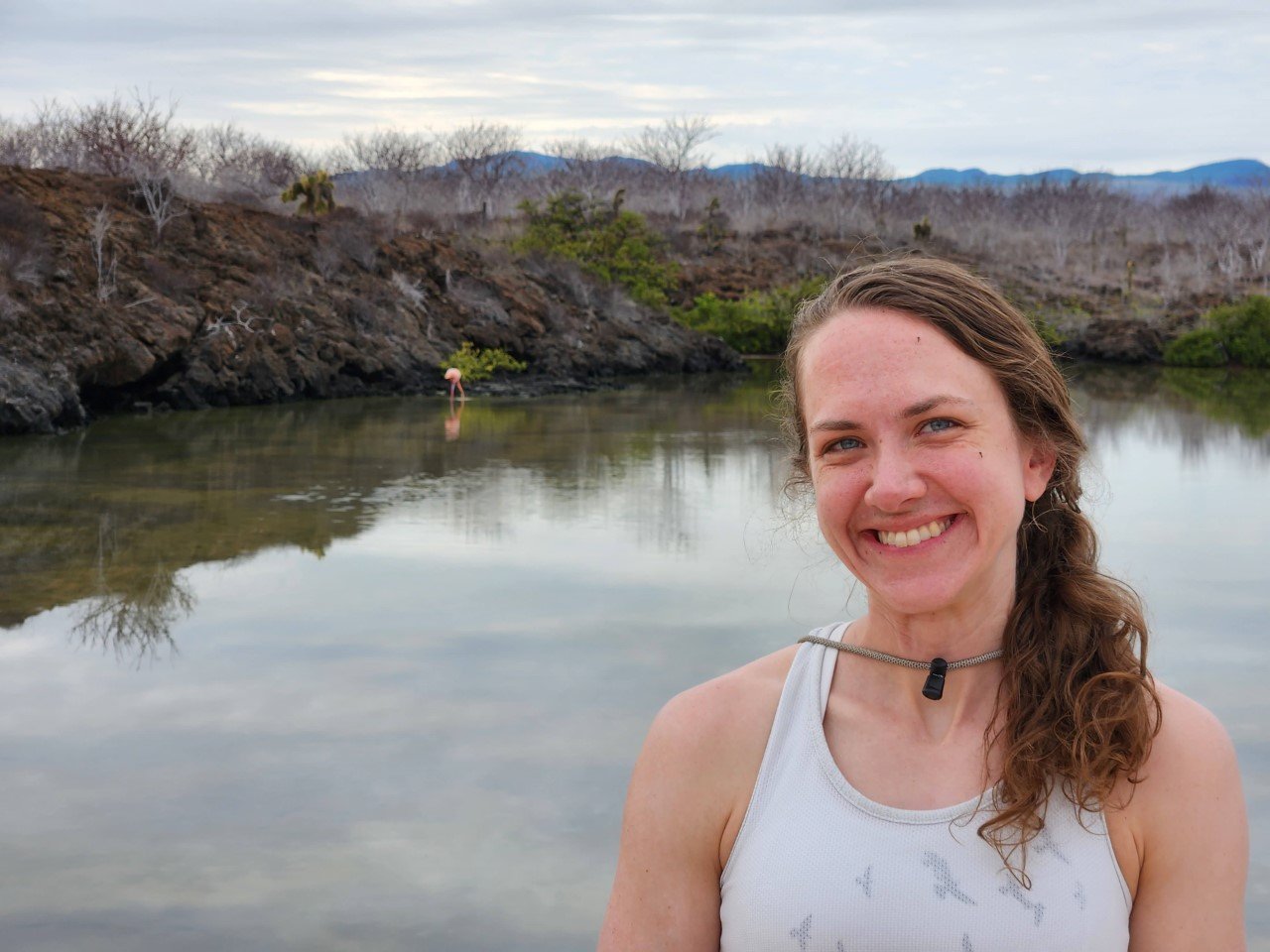Senior Scientist Anne Sheldrake is a key member of the StemBioSys team, with a special focus on developing new products and designing lab protocols. We recently sat down with her to learn more about her background, her day-to-day responsibilities and some important lessons she’s learned over the course of her career.
Education and Career Beginnings
A native of Landenberg, PA, Anne attended Penn State University and was a scholar in the school’s prestigious Schreyer Honors College program. While she knew that she wanted to study engineering, she was undecided on a specific major at first. “I didn't know if I wanted to study chemical engineering or biomedical engineering; I liked both.” Anne’s brother suggested that she focus on chemical engineering, because doing so would enable her to eventually transition into the biomedical field. When one of her professors assigned a class project that involved creating a poster on an application of a particular element, Anne chose magnesium, and focused on resorbable bone implants. The project confirmed Anne’s interest in biomedicine, as did her participation in a Women in Science and Engineering research program through the NASA Pennsylvania Space Grant Consortium Research Internship Program. This enabled her to work in a research lab for the first time as a freshman. “That’s when I knew: this is definitely what I want to do,” she says.
After graduating with a B.S. in Chemical Engineering from Penn State, Anne relocated to Texas and earned a Master’s Degree in Bioengineering and Biomedical Engineering as part of a joint program between the University of Texas at San Antonio (UTSA) and the University of Texas Health Science Center at San Antonio. She remained in the San Antonio area, working at Texas Biomedical Research Institute as a Senior Research Associate. While there, she managed the institute’s efforts to optimize lab protocols for the extraction of DNA, RNA and protein from musculoskeletal tissues and saliva as part of research on the genetics of osteoporosis and arthritis.
During her time in graduate school, Anne got to know Travis Block, then a Ph.D. student at UTSA whose research focused on characterizing cell-derived extracellular matrices (ECMs). His work was subsequently licensed as CELLvo™ Matrix by StemBioSys, and he is currently the company’s Chief Technical Officer. Block recruited Anne to join him at StemBioSys in 2017 as a Research Associate. She is now a Senior Scientist, concentrating on new product development.
A Typical Day at StemBioSys
Anne’s daily schedule depends on the projects she’s managing; in general, however, “my days are split between working in the lab and analyzing data at my desk.” Currently, she starts each morning by checking on the health of the cells she and her team are growing. “How they look will determine somewhat what I do for the rest of the day; did they grow as much as I wanted them to? Do I need to passage them or do they just need to be fed?” The process of feeding the cells involves filling each cell sample dish with a liquid medium which contains the proteins, glucose and other nutrients that the cells need to keep growing. Anne also has to continually remove the waste that the cells secrete as they grow; she likens the cells to pets who “need to be kept happy.”
Next on the agenda might be a lab meeting; the StemBioSys scientists meet two mornings a week to discuss their projects. “It’s always nice to talk about what everyone else is doing in terms of our manufacturing needs, how things are going with our other research projects… With the role of Senior Scientist, what I've really enjoyed is getting to have a hand in making decisions on all of the other projects that are going on.” Colleagues come to Anne throughout the day to discuss next steps on their projects, so she makes sure to keep informed on all of the projects currently in development.
Growing cells is a daily responsibility, which means that a member of the team needs to come in over the weekend to check on them and provide them with the nutrients they need. The lab maintains a rotating schedule of scientists to take care of this task, and Anne often assists those whose turn it is to come in. “I'm probably here about every other weekend.”
Knowledge Transfer
One of the things that Anne appreciates most about her work is that it enables her to apply her knowledge from project to project (and, in some cases, from job to job). At Texas Biomedical Research Institute, she worked closely with bone and cartilage; she was able to draw upon this expertise at StemBioSys when helping to develop the CELLvo™ ChondroMatrix - an ECM created by human articular chondrocytes. Likewise, Anne’s previous experience assessing osteoarthritis in the knee joints of baboons proved invaluable when the StemBioSys team was approached regarding harvesting cells from the joints of healthy and diseased humans. “We [initially] considered time-consuming and expensive ways to qualify whether that person had osteoarthritis or not. But I knew from my previous experience that there is a defined scale to visually assess the grade of osteoarthritis in a joint. So just based on images of joints we were able to define the osteoarthritis status. And that led to the release of two new products for us.”
While knowledge is certainly important, Anne stresses that being a successful research scientist also includes embracing the unknown. “Working in biomedical research [involves] trying to apply facts from different fields to your question. I think when you're first starting out in research, it can be hard and you can end up feeling kind of dumb just not knowing what the next step is. But not knowing the answers is the fun part. You get to decide.”
Outside of the Office
When she’s not working, Anne likes to travel; she recently returned from a trip to the Galápagos Islands. She also enjoys relaxing with her fiancé and their pets (three cats and a dog), and keeping fit by weightlifting and running. “Running has been an important source of joy in my life,” she says, and mentions trail running as one of her favorite activities because it blends exercise with “getting out in nature.”
Anne has also volunteered her time and effort as an Assistant Coach for Girls on the Run. “I love Girls on the Run. I’ve volunteered with them in a lot of capacities over the years,” she says. “Last spring and fall, I volunteered on the planning committee for the end-of-season 5K... I love getting to see the girls train and accomplish something they didn’t think was possible at the beginning of the season.”
Anne’s skills and experience, combined with her creativity and collaborative approach, have made her a valued and respected member of the team. “StemBioSys is lucky to have Anne and she has been instrumental to our growth in the six years she has been with the company,” says StemBioSys CEO Bob Hutchens. “We look forward to her continuing to help drive our technology forward.”


